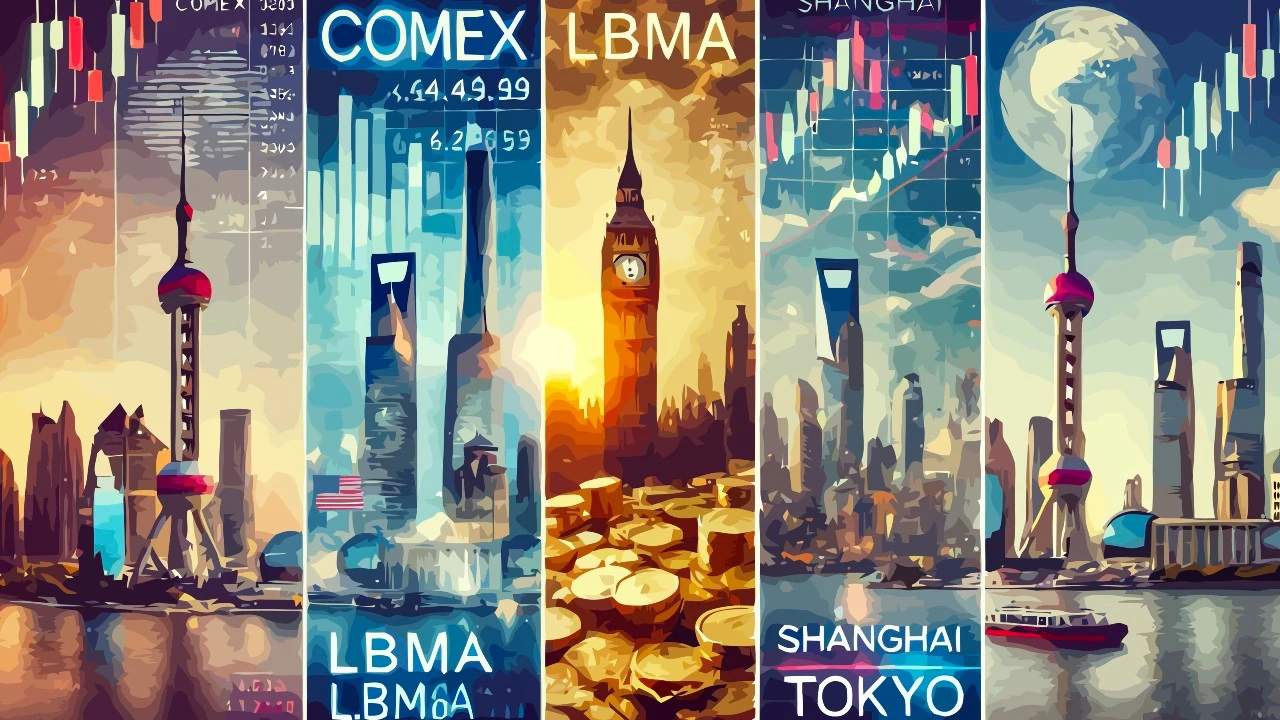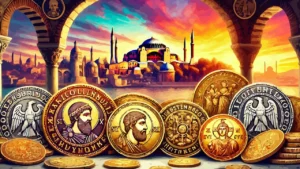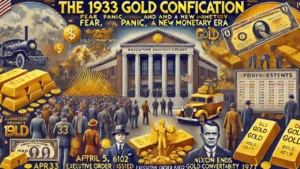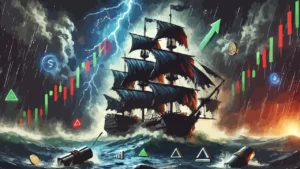Gold and silver have always had a crucial symbolic and commercial value in the history of humanity. The need to define official prices for these precious metals has led to the birth of quotation systems that have evolved over the centuries.
This article explores the origin of the first official quotations, their transformation over time and the mechanisms that govern current market dynamics at a global level.
Contents
#1. Early gold and silver prices
The first official quotations of gold and silver arose from the need to regulate trade between distant markets. During the 17th century, the London Stock Exchange emerged as a major trading center for precious metals. However, the first truly official quotation of gold came in 1919 with the birth of the London Gold Fixing, when five of London’s leading banks came together to fix the price of gold twice a day, through an open auction system.
The London Gold Fixing mechanism required participating banks to indicate buying and selling prices until they reached a point of equilibrium that reflected the market value. This procedure ensured transparency and reliability, establishing a global reference price used to settle commercial contracts, investment activities and government transactions.
For silver, a similar system was established in 1897 with the creation of the London Silver Market, which adopted a similar methodology to determine the daily reference price. Again, major financial institutions participated in the auction, ensuring that the price set was fair and representative of the market.
These price fixing systems provided a stable reference point for decades, contributing to the development of international trade in precious metals. However, with the expansion of financial markets and the increase in demand for transparency, significant changes were introduced to adapt the procedures to new market dynamics.
#2. The influence of the gold standard
The introduction of the Gold Standard in the 19th century revolutionized the global monetary system by pegging the value of currencies to gold. This system stabilized economies and provided a solid basis for international trade. The price of gold was held fixed by governments, which guaranteed the convertibility of currencies into gold at a predetermined rate.
The Gold Standard required that every coin issued be backed by gold in national reserves. This constraint forced governments to maintain a prudent monetary policy, limiting inflation and promoting economic stability. However, the system also showed significant vulnerabilities: during economic crises or wars, countries were forced to suspend convertibility to finance extraordinary expenses.
Silver played an important role in some countries through the bimetallic system, which used both gold and silver as the monetary base. However, the fluctuation in the value ratio between the two metals created distortions in the markets, gradually pushing economies to prefer gold as the sole reference.
Price regulation during this period was strictly controlled by the states and the main central banks. The price of gold remained stable for decades, but the economic tensions related to world wars and financial crises led to the progressive disintegration of the Gold Standard, culminating with its definitive abolition in the 1970s.
#3. The transition to free markets
The end of the Gold Standard marked the beginning of the era of free markets, in which the price of gold and silver was determined solely by the law of supply and demand. In 1971, the so-called Nixon Shock ended the convertibility of the dollar into gold, making way for free fluctuations and free markets.
This transition opened the door to financial speculation: investors began to use instruments such as futures contracts, options and exchange-traded funds (ETFs) to profit from price changes. Increased market volatility offered new opportunities for profit but also entailed greater risks.
Silver, with its greater volatility than gold, became a favorite among speculative traders. Historical events such as the Hunt brothers’ attempt to manipulate the silver market in the 1980s demonstrated the impact that speculation could have on precious metal prices and prompted regulators to introduce new control measures.
Market liberalization also led to the creation of specialized exchanges, such as the COMEX in New York, which became a major center for gold and silver futures trading. The adoption of electronic platforms expanded access to global investors, increasing the liquidity and transparency of trading.
#4. Major quotations
The world’s gold and silver exchanges play a crucial role in determining market prices. Each exchange uses specific mechanisms to ensure transparency and stability of prices, involving financial institutions, governments and private investors.
LBMA (London)
The London Bullion Market Association (LBMA) is the global benchmark for the spot price of gold and silver. The price fixing system, known as the LBMA Gold Price, is based on an electronic auction conducted twice a day, at 10:30 and 15:00 (London time). This process, managed by the ICE Benchmark Administration (IBA), involves the major international financial institutions that participate as “market makers”. During the auction, the participating banks send buy and sell orders until supply and demand balance, thus determining the official price.
The fixing process is highly transparent and regulated: every stage of the auction is monitored to prevent manipulation and ensure market integrity. The final price, known as the LBMA Gold Price AM (morning) and PM (afternoon), is published publicly and used as a global benchmark for commercial contracts, financial products and bank reserves. Although based in the United Kingdom, prices are not quoted in British pounds (GBP) but in US dollars (USD).
For silver, the fixing system follows a similar mechanism, known as the LBMA Silver Price, with a daily electronic auction that sets the official price. Again, the auction is managed by the ICE Benchmark Administration and involves financial institutions that ensure a transparent and representative process of the market.
The LBMA sets rigorous quality standards for traded gold and silver bullion, defined through its Good Delivery List certification, which lists approved refiners and ensures that precious metals meet specific purity, weight and hallmarking criteria.
In addition to the spot price, the LBMA provides data on premiums and discounts applied to physical transactions, allowing traders to assess market conditions in real time. The transparency of this data helps to strengthen investor confidence and ensures the reliability of the system.
COMEX (New York)
The COMEX (Commodity Exchange Inc.), part of the New York Mercantile Exchange (NYMEX) and operated by the CME Group, is one of the world’s leading markets for gold and silver futures contracts. Unlike the LBMA’s auction system, the COMEX uses a mechanism based on standardized futures contracts that allow investors to speculate on the future price of precious metals or to hedge against market volatility.
The price of gold and silver on the COMEX is determined by supply and demand during trading sessions, which run nearly 24 hours a day through the CME Globex electronic platform. Investors can trade futures contracts with precise specifications regarding the quantity, quality, and delivery date of the metal. Prices are quoted in U.S. dollars (USD).
The standard futures contract for gold on the COMEX is based on 100 troy ounces of gold with a minimum purity of 99.5%, while for silver the standard contract is 5,000 troy ounces with a minimum purity of 99.9%. However, most investors close their positions before the delivery date, using the market primarily for speculative or hedging purposes.
COMEX also uses an intraday reference pricing system, which allows traders to see the current price of metals in real time. In addition, the exchange publishes a daily settlement price, which is the official price used to value futures and options contracts.
A distinctive aspect of the COMEX is the possibility of physical delivery of the metal at the expiration of the contract, although only a small percentage of the contracts are actually closed with physical delivery. Most of the trading is for speculative or financial hedging purposes.
The COMEX market is known for its high liquidity and transparency, but also for price volatility due to the high participation of institutional investors and speculators. Geopolitical events, interest rate changes and macroeconomic data can significantly affect prices during trading sessions.
To ensure market integrity, CME Group enforces strict regulatory standards and uses margining systems to reduce the risks associated with speculative trading. Additionally, daily price limits are implemented to prevent excessively volatile movements during trading sessions.
The COMEX today represents one of the main global references for the determination of the price of gold and silver, influencing the quotations of physical and financial markets throughout the world.
Shanghai Gold Exchange (China)
The Shanghai Gold Exchange ( SGE ), founded in 2002 with the support of the People’s Bank of China, is now the world’s largest market for physical gold. Unlike Western exchanges that focus on futures contracts, the SGE focuses primarily on physical trading of the precious metal, promoting the direct purchase and sale of gold and silver bars.
The SGE pricing system uses a continuous auction mechanism, where participants enter buy and sell orders that are matched in real time. Prices are quoted in Chinese yuan (CNY), contributing to China’s strategy to internationalize its currency and reduce dependence on Western financial markets.
One of the key tools of the SGE is the Shanghai Gold Benchmark Price, introduced in 2016, which sets a daily reference price for gold, similar to the LBMA system but denominated in yuan. This benchmark is used both domestically and internationally as a reference point for transactions in physical gold.
SGE also operates a highly regulated physical delivery system, ensuring that every bar traded meets rigorous standards of purity and quality. SGE-licensed refiners must be certified and meet local Good Delivery system criteria.
The platform supports a wide range of products, including standardized bars, small-sized bars for the retail market, and swap contracts. In addition, SGE has introduced the International Board program that allows foreign investors to directly participate in the Chinese gold market, furthering SGE’s integration into global markets.
SGE’s approach emphasizes transparency and security, with stringent regulations aimed at reducing the risk of market manipulation. The exchange is closely supervised by the Central Bank of China, which uses SGE as a strategic tool to strengthen China’s position as a leader in the global gold market.
Tokyo Commodity Exchange (Japan)
The Tokyo Commodity Exchange (TOCOM) is Japan’s leading exchange for trading precious metals such as gold and silver, as well as other energy and agricultural commodities. Founded in 1952 and headquartered in Tokyo, TOCOM has played a crucial role in the development of the precious metals market in Asia, offering futures and options contracts that allow investors to speculate on price movements or hedge against market risks.
TOCOM uses an electronic trading system that allows continuous trading during the exchange’s opening hours. Futures contracts on TOCOM are standardized and regulated, ensuring transparency and security for investors. The standard contract for gold is based on 1 kg of gold with a purity of 99.99%, while for silver the standard contract is 30 kg with a minimum purity of 99.9%.
The price of gold and silver on TOCOM is determined by supply and demand during trading sessions, with real-time updates that reflect global market dynamics. Prices are quoted in Japanese yen, making TOCOM a strategic platform for Asian and international investors looking to diversify their portfolios and hedge against currency risk.
One of the distinctive aspects of TOCOM is the possibility of physical delivery of the metal at the expiration of the contract, although most transactions are closed before the actual delivery date. The market is known for its volatility, often influenced by geopolitical factors, currency movements and changes in the monetary policies of major Asian economies.
TOCOM is regulated by the Japanese Financial Services Agency (FSA), which ensures transparency and fairness of market operations. In addition, TOCOM applies strict margin requirements and uses risk control mechanisms to protect investors and maintain market stability.
Over the years, TOCOM has expanded its range of financial instruments to include platinum, palladium and crude oil contracts, becoming a central hub for commodity trading in Asia. However, the precious metals market remains one of the most active and liquid sectors of the exchange.
With the increasing interconnectivity of global financial markets, TOCOM continues to attract international investors, offering arbitrage opportunities and hedging against the volatility of global precious metals markets. Its strategic role in the Asian landscape makes it a key reference point for the determination of gold and silver prices in the region.







Leave a Reply